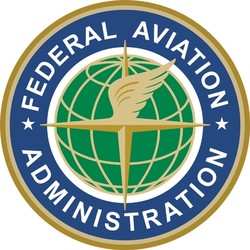Potential Problems Noted During Routine Engine Check In Another Country
The FAA has distributed a Special Airworthiness Information Bulletin (SAIB) to owners, operators, and certificated repair facilities of Lycoming Engines of the possible failure of engine thru-studs, and/or cylinder mounting studs.

The agency received reports from an aviation authority of another country identifying cylinder mounting studs that failed on Lycoming engines due to the absence of protective cadmium plating on the studs. One report concerned a No. 2 cylinder that had separated from the crankcase after failure of the mounting studs. This resulted in damage to the surrounding crankcase and a failed connecting rod. Of the eight studs that secured the cylinder to the crankcase prior to failure, four were lost with the released sections of the crankcase and cylinder.
Laboratory analysis determined that one of the four remaining studs had a high cycle fatigue fracture. The fracture started from a single point corresponding to a corrosion pit in a thread root. Evidence of cadmium plating remained on the coarse threaded section of the stud, but there was no evidence of the cadmium plating where the corrosion pit developed.
A report of a routine maintenance check of another aircraft, from the same operator’s fleet, stated that one failed cylinder mounting stud was found. Analysis of this failed stud confirmed that it had also failed in high cycle fatigue initiating from a corrosion pit in the thread root. Cadmium plating was not found on the section of the stud inspected, although traces of cadmium plating were present on the ‘hold down’ nut.
The safety recommendation made by the aviation authority of the other country and considered for implementation by the FAA is:
“It is recommended that Lycoming introduce additional maintenance requirements to ensure that the cadmium plating on the cylinder mounting studs, fitted to Lycoming engines, is not permitted to degrade to a level where corrosion of the base stud material can result in failure of the stud.”
When contacted by the New York Aircraft Certification Office (NYACO) Lycoming maintained that the instructions in the Lycoming Overhaul Manual are adequate. Lycoming also advised that the potential causes of stud failure include:
- Improper torque at cylinder installation
- Corrosion pitting
- Improper torque due to excessive paint on the cylinder flange (all Lycoming cylinders are painted, the problem is caused by excessive paint on the cylinder flange mounting surface to the crankcase and/or the hold down nut area, prior to installation)
- Fretting on the crankcase main bearing mating surfaces.
The NYACO also reviewed the National Transportation Safety Board’s (NTSB) database for cylinder stud failures occurring between January 2000 and June 2013 and found 7 failures on Lycoming engines, and 2 failures on Continental engines. The Board attributed the failures to fatigue of the studs that was caused predominately by insufficient preload and/or improper installation. Corrosion pitting was not mentioned as a cause of failure by the Board.
One of the Board’s reports stated that three of the cylinder studs for the No. 3 cylinder separated due to fatigue. In addition, the fatigue separation of multiple cylinder studs resulted in looseness of the cylinder, and the subsequent vibration and fatigue of a fuel injector line. There was no reported fire in this event.
Eleven U.S. engine shops were asked about their experience with cylinder studs and the Lycoming overhaul manual. They all agreed that the instructions in the Lycoming overhaul manual are adequate. Some engine shops reported seeing some stud failures, but they did not indicate that corrosion pitting was a problem.
Recommendations:
- Inspect cylinder studs and thru-studs, for corrosion pits and missing cadmium plating.
- Follow the cylinder installation instructions in the Lycoming overhaul manual or Lycoming Service Instruction No. 1029D.
- Use Lycoming special tools, or their equivalent, to torque the cylinder nuts.
- When using the special wrenches to torque cylinder nuts, ensure the wrenches do not contact the cylinder or other parts of the engine. Wrench contact can result in a correct torque indicated by the torque wrench, but the actual torque applied to the nut, and the clamping force, will be lower than required.
- When accessible, inspect the crankcase main bearing mating surfaces for fretting. Lycoming has advised that no fretting is allowed.
 ANN's Daily Aero-Term (10.31.25): Minimum Sector Altitude [ICAO]
ANN's Daily Aero-Term (10.31.25): Minimum Sector Altitude [ICAO] ANN's Daily Aero-Linx (10.31.25)
ANN's Daily Aero-Linx (10.31.25) NTSB Final Report: Airbus A321-271N (A1); Cessna 172N (A2)
NTSB Final Report: Airbus A321-271N (A1); Cessna 172N (A2) ANN FAQ: Follow Us On Instagram!
ANN FAQ: Follow Us On Instagram! Airborne 10.30.25: Earhart Search, SpaceX Speed Limit, Welcome Back, Xyla!
Airborne 10.30.25: Earhart Search, SpaceX Speed Limit, Welcome Back, Xyla!



